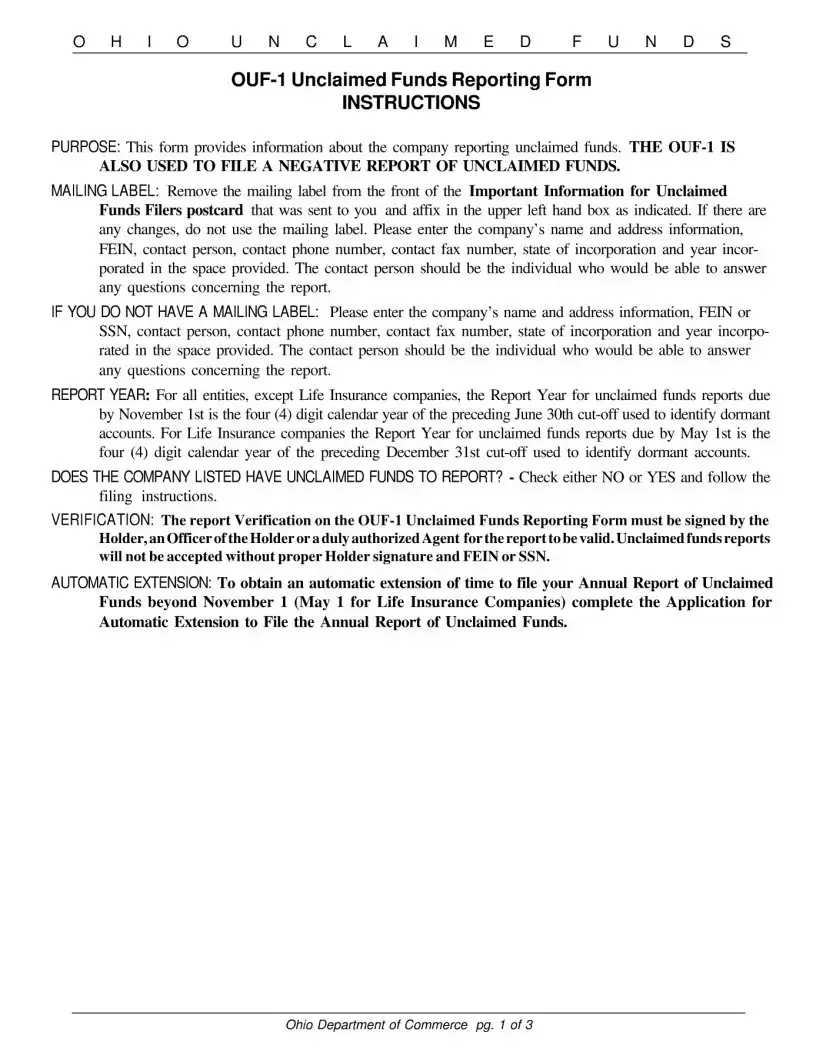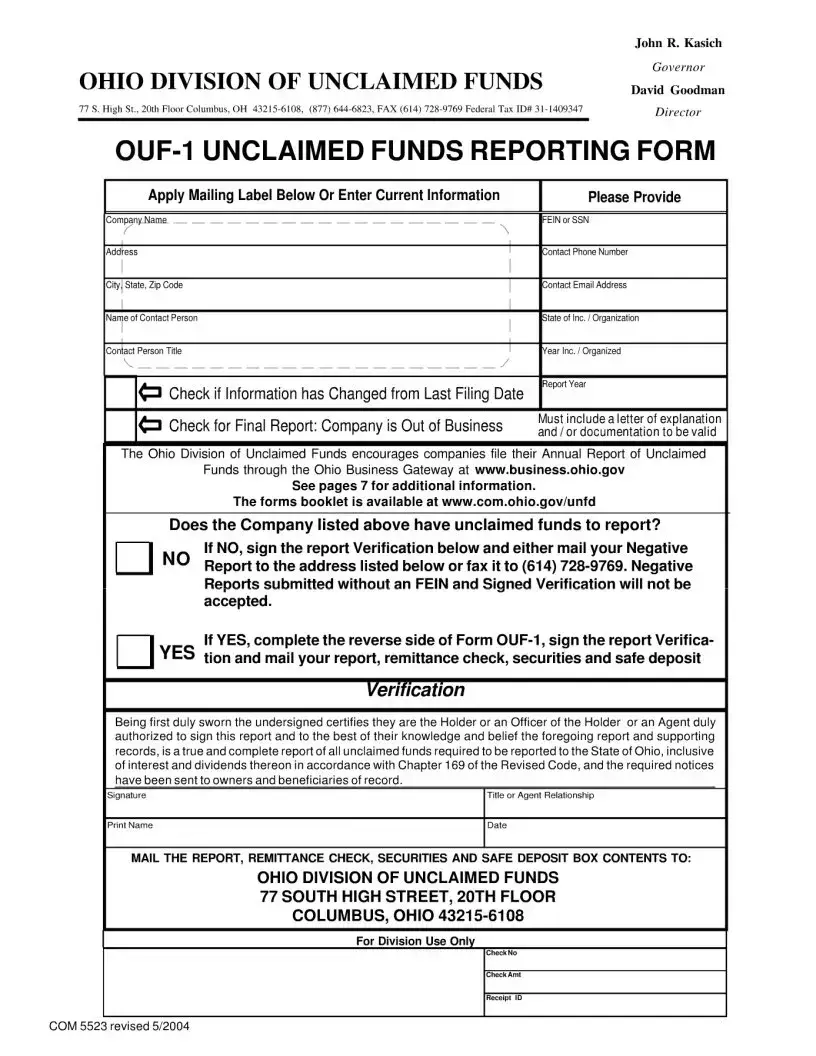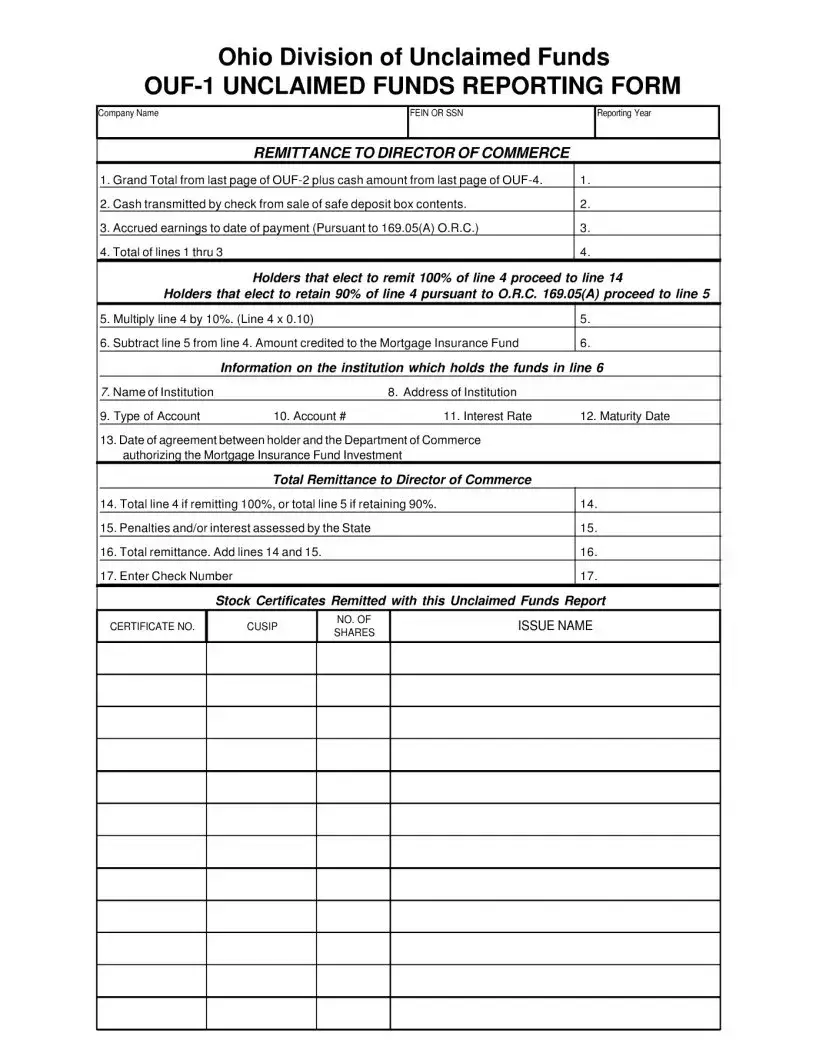What is the Ohio Unclaimed form?
The Ohio Unclaimed Form is a document that individuals fill out to claim property or funds that are unclaimed and considered lost or forgotten. These assets are held by the state until claimed by their rightful owner or their heirs.
How can I check if I have unclaimed funds in Ohio?
To check for unclaimed funds in Ohio, you can visit the Ohio Department of Commerce's Division of Unclaimed Funds website and use their search tool. You can search using your name or business name to see if there are any funds waiting to be claimed.
What kind of property can be claimed through the Ohio Unclaimed Form?
Various types of property can be claimed, including, but not limited to, bank accounts, safe deposit box contents, unpaid wages, insurance policies, and stock dividends. It's important to check regularly, as new assets are added to the system periodically.
Is there a deadline for claiming these funds?
No, there is no deadline to claim these funds. However, it is advisable to claim any potential funds as soon as possible to avoid complications. The state of Ohio holds these funds indefinitely until the rightful owner or heir claims them.
What documentation will I need to claim my unclaimed funds?
When filing a claim for unclaimed funds, you'll need to provide proof of ownership or entitlement. This may include a valid photo ID, documentation proving your relationship to the account or asset, and any other document that supports your claim.
Can I file a claim for a relative’s unclaimed funds?
Yes, you can file a claim for a relative's unclaimed funds. If you're claiming on behalf of a deceased relative, you'll need to provide documentation such as a death certificate, will, or other legal documents proving your right to the assets.
How long does the process take to claim unclaimed funds in Ohio?
The processing time can vary depending on the complexity of the claim and the workload of the Division of Unclaimed Funds. Generally, claims are processed within a few weeks to several months. It's important to provide complete and accurate information to avoid delays.



